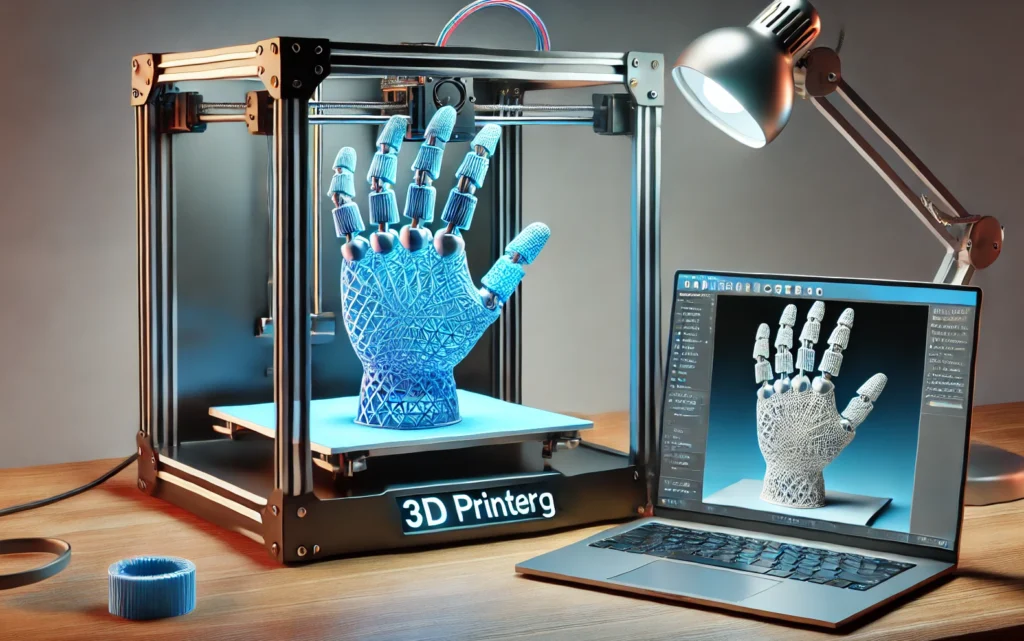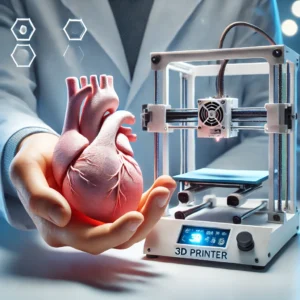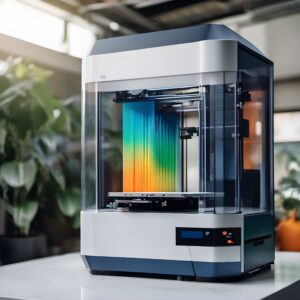Three-Dimensional 3D Printing: A Comprehensive Guide

What is Three-Dimensional 3D Printing?
3D printing, also known as additive manufacturing, enables the creation of three-dimensional objects from digital models. This process involves layering materials to build shapes that traditional manufacturing cannot easily achieve, which is why 3D printing is used to make three-dimensional objects in various fields, from healthcare to art. We’ll explore the technical processes behind 3D printing, its applications, benefits, and limitations, and how it’s changing the face of modern manufacturing.
1. How 3D Printing Works: The Technical Process Explained
3D printing starts with a digital model and builds a physical object layer by layer. Below are the key steps:
1.1. Designing the Digital Model
- Software for 3D Design: CAD software like AutoCAD, Blender, or Tinkercad.
- Converting Designs to STL: 3D models are typically converted into an STL (Standard Tessellation Language) file for 3D printing.
1.2. Slicing the Model
- Why Slicing is Important: Slicing breaks down the model into printable layers, guiding the 3D printer on the step-by-step process.
- Slicing Software: Tools like Cura and Slic3r create instructions for the printer to follow.
1.3. Printing Layer by Layer
- Materials Used: Plastics (PLA, ABS), metals, resins, ceramics, and even biological materials.
- Types of Printers: Different printers like FDM, SLA, and SLS work with specific materials and techniques.
1.4. Post-Processing
- Cleaning and Finishing: Depending on the printer and material, objects may need curing, sanding, or coating for durability and aesthetics.
2. Key Benefits of 3D Printing for Creating Three-Dimensional Objects
3D printing is used to make three-dimensional objects with many advantages over traditional manufacturing:
2.1 Customization and Flexibility
- Personalized Designs: Ideal for prosthetics, art, and custom tools where each item needs unique specifications.
2.2 Cost Efficiency
- Minimal Waste: Only the material needed for the object is used.
- Affordable Prototyping: 3D printing enables rapid prototyping, cutting costs and time in product development.
2.3 Complexity Without Added Cost
- Freeform Design: Complex geometries don’t add cost, unlike with molding or machining, enabling creativity and functionality.
2.4 Reduced Lead Time
- From Design to Product: Shorter time from concept to production compared to traditional methods.
3. Types of 3D Printing Technologies
Different 3D printing technologies use varied techniques to achieve results suitable for specific materials and applications:
3.1 Fused Deposition Modeling (FDM)
- Popular for Prototypes: Ideal for hobbyists and basic industrial prototypes.
- Materials: Primarily thermoplastics like PLA, ABS, and PETG.
3.2 Stereolithography (SLA)
- High Precision: Used for creating detailed models with smooth finishes.
- Materials: Resins that harden with UV light.
3.3 Selective Laser Sintering (SLS)
- Industrial Strength: Works with powders to create robust parts, commonly used in aerospace.
- Materials: Polyamides and nylons, producing durable and flexible parts.
3.4 Direct Metal Laser Sintering (DMLS) and Electron Beam Melting (EBM)
- Metal Fabrication: Ideal for aerospace, automotive, and medical implants.
- Materials: Metals like titanium, aluminum, and stainless steel.
3.5 Bioprinting
- Medical Revolution: Used to print tissues and organs.
- Materials: Bio-inks, including living cells, suitable for producing organs and complex tissues.
4. Applications of Three-Dimensional 3D Printing Across Industries
4.1 Healthcare and Bioprinting
- Custom Implants and Prosthetics: 3D printing enables individualized medical devices.
- Organ and Tissue Printing: Researchers work on creating organs like hearts and kidneys.
4.2 Aerospace and Automotive
- Lightweight Parts: 3D printing reduces weight, which is crucial for fuel efficiency.
- Rapid Prototyping and Testing: Enables faster development and testing of complex parts.
4.3 Architecture and Construction
- Modeling and Prototyping: Scaled architectural models for better visualization.
- Printing Buildings: Large-scale 3D printers build homes and structures.
4.4 Consumer Goods and Fashion
- Personalized Products: Jewelry, eyewear, and customized clothing.
- Prototyping New Products: 3D printing is essential for testing consumer goods.
5. Examples of 3-Dimensional Objects Created with 3D Printing
1. Prosthetics and Implants
- Unique prosthetic limbs and dental implants customized for individuals.
2. Aerospace Components
- Light, durable parts for rockets, satellites, and aircraft engines.
3. Consumer Products
- From toys to furniture, 3D printing is used to make three-dimensional home goods and lifestyle items.
4. Artwork and Sculptures
- Intricate and complex sculptures, impossible with traditional methods.
5. Educational Tools
- Models of human anatomy, geographic terrains, and historical artifacts.
6. Advantages and Limitations of Three-Dimensional 3D Printing
6.1 Advantages
- Design Freedom: Ability to create geometrically complex objects.
- On-Demand Production: Efficient for both prototypes and finished products.
6.2 Limitations
- Material Constraints: Limited range of materials for specific printing methods.
- Durability: Not all printed items match the strength of traditionally manufactured products.
- Production Speed: Large items or high quantities can still be slower compared to mass production.
7. The Future of Three-Dimensional 3D Printing
The future of three-dimensional printing is promising, with advancements expected in material science, speed, and technology integration:
1. Faster Printing Speeds
- Time-Efficient Solutions: Technology developments to print larger objects faster.
2. Broader Range of Materials
- New Materials for Better Applications: Expansion in materials like ceramics, biodegradable plastics, and composites.
3. Integration with AI and Robotics
- Smart Printing: Automated quality checks and AI for design optimization.
4. Environmental and Sustainability Advances
- Reducing Waste: Biodegradable materials and energy-efficient processes.
5. Medical and Bioprinting Breakthroughs
- Printing Organs: Future prospects of bio-printed organs for transplants, solving organ donation shortages.
8. Frequently Asked Questions About Three-Dimensional 3D Printing
- What is the main advantage of 3D printing over traditional manufacturing?
- How strong are 3D-printed objects?
- Can 3D printers create any shape?
- What is the cost of a 3D printer?
The Transformative Power of Three-Dimensional 3D Printing
Three-dimensional 3D printing has revolutionized numerous industries by making it possible to create unique, complex objects affordably and efficiently. This technology has enabled groundbreaking developments in healthcare, aerospace, art, and more. As advancements continue, 3D printing is poised to shape a sustainable, innovative future across global industries.
Visit our other website: https://synergypublish.com





